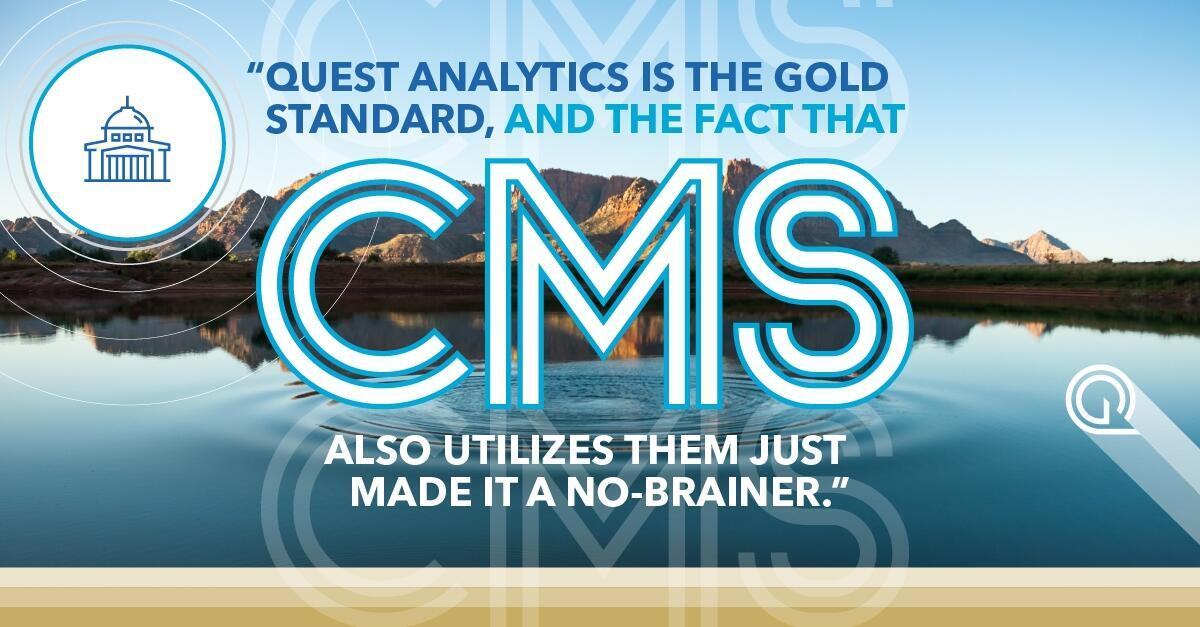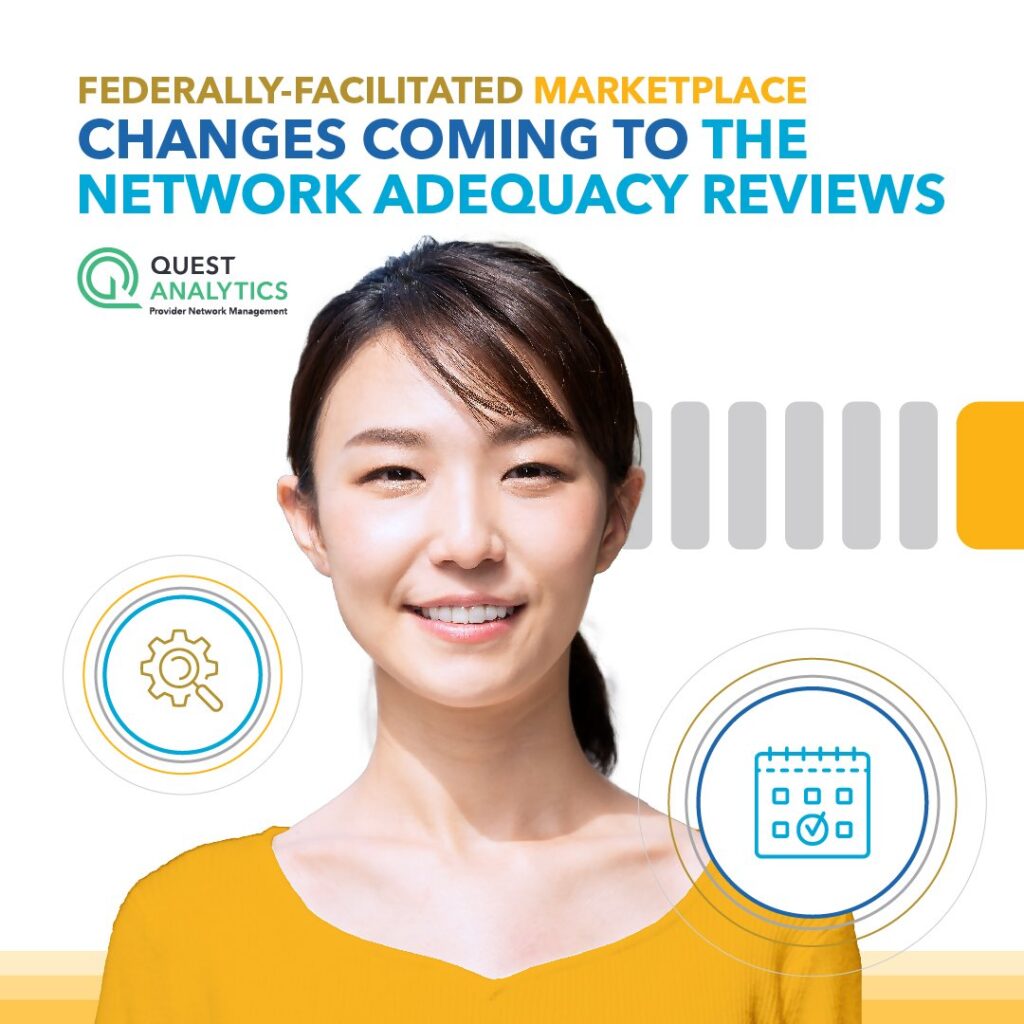NEW FFE NETWORK ADEQUACY OVERSIGHT, REQUIREMENTS AND REVIEWS
Background
Every year HHS issues the NBPP rule for the following plan year. The rule sets out the parameters for the health insurance marketplace, including the standards that must be met before a plan can be certified as a QHP and offer coverage on the Federal Marketplace. A key aspect of the certification is ensuring plans offer a sufficient choice and network of providers, also known as network adequacy. “HHS is of the view that strong network adequacy standards are necessary to achieve greater equity in health care and enhance consumer access to quality, affordable care through the Exchanges.”
FFE Network Adequacy Reviews
CMS will evaluate the adequacy of provider networks of QHPs offered through the FFEs, or of plans seeking certification as FFE QHPs, except for FFEs in certain States beginning with the QHP certification cycle for PY 2023.
CMS will not evaluate QHP network adequacy in FFE States performing plan management functions that elect to perform their reviews of plans seeking QHP certification in their State, as long as the State applies and enforces quantitative network adequacy standards that are as stringent as the Federal network adequacy standards and the network adequacy reviews are conducted before QHP certification. CMS will continue to coordinate with state authorities to address network adequacy compliance.
NEW SPECIALTY, TIME AND DISTANCE STANDARDS
A main component of the network adequacy standards is ensuring the certified plans continually provide members with reasonable, timely access to health care providers. Plans will need to meet the new requirements as outlined throughout this blog.
- Provider and Facility
- Time and Distance Standards
- County Classification
SOLUTION FOR QHP NETWORK ADEQUACY
We offer a pre-built template based on the PY 2023 CCIIO FFE QHP Network Adequacy requirements. With this template, you’ll be able to:
- Easily monitor compliance of your provider networks
- Identify deficiencies in your provider network
- Understand what is right, wrong and missing in your provider data
- Streamline provider recruitment
On top of that, we provide you with a dedicated team of consultants who are ready to answer any questions you may have.
Schedule a complimentary strategy session to learn more.
ESSENTIAL COMMUNITY PROVIDERS
Plans must submit Essential Community Providers (ECPs) information as part of their QHP Application. Plans must have a sufficient number and geographic distribution of ECPs, where available, in accordance with 45 CFR 156.235.
The required ECP participation standard has increased from 20 percent to 35 percent of available ECPs in the plan’s service area, including approved ECP write-ins that will also count toward a plan’s satisfaction of the 35 percent threshold.
When a plan does not meet ECP Standards, there are two options:
- Add more contracted providers to the network to come into alignment with the standards;
- Submit a completed ECP Justification Form
The justification process will require plans that do not yet meet the ECP standards to detail:
- The reasons that one or more ECP standards were not met;
- The mitigating measures the plan is taking to ensure enrollee access to ECPs; information regarding enrollee complaints regarding access to ECPs;
- And the plan’s efforts to recruit additional ECPs.
CMS will use any updated provider data and the completed ECP Justification Form submitted as part of the certification process to assess whether the plan meets the regulatory requirement, prior to making the certification decision.
For plans that use tiered networks, ECPs must be contracted within the network tier that results in the lowest cost-sharing obligation for the respective plan’s
enrollees in order for those ECPs to count toward the plan’s satisfaction of each element of the ECP standard.
For plans with two network tiers (for example, participating providers and preferred providers), where cost-sharing is lower for preferred providers, only providers in the preferred network will be counted towards satisfying the ECP standards. The lowest cost tier of the network would be counted towards ECP standards.
The elements of the ECP standard are:
- Contracting with a minimum of 35 percent of available ECPs in the plan’s service area
- Offering contracts in good faith to all available Indian health care providers
- Offering contracts in good faith to at least one ECP in each ECP category in each county in the service area
Additionally, plans may comply with the requirement to offer contracts to at least one ECP in the category of “other ECP providers” by offering a contract to a Substance Use Disorder Treatment Center.
TELEHEALTH SERVICES DATA
Plans must submit information on whether in-network providers offer telehealth services. For each provider on the Individual Providers (NA) tab of the ECP/NA template, plans must indicate yes or no to whether that provider offers telehealth services.
CMS defines telehealth as, “professional consultations, office visits, and office psychiatry services through brief communication technology-based service/virtual check-in, remote evaluation of pre-recorded patient information, and inter-professional internet consultation.”
Plans who do not already have data on which providers offer telehealth would need to collect this information prior to certification. Plans that do not currently collect this information may do so using the same means and methods by which they already collect information from their network providers relevant to time and distance standards and provider directory information.
Plans that do not have the information available by the time of the QHP certification process can indicate within the ECP/NA template drop-down options that they have requested the information from the provider and are awaiting the response.
For the 2023 plan year, CMS intends to use the collected information to inform network adequacy standards for future plan years.
APPOINTMENT WAIT TIMES
Beginning in the 2024 plan year (PY 2024), CMS will incorporate appointment wait time standards to assess QHP FFE network adequacy. The appointment wait time standards will apply to medical QHPs. For SADPs, only the dental provider specialty within the Specialty Care (Non-Urgent) category of appointment wait time standards will apply.
The appointment wait time standards measure the number of business days between when an individual requests an appointment and when the first in-person appointment is available. These standards apply to appointments for both new and existing patients.
APPOINTMENT WAIT TIME STANDARDS FOR EXCHANGE PLAN YEAR 2024 CERTIFICATION
Provider/Facility Specialty Type Appointments Must Be Available Within
- Behavioral Health 10 business days
- Primary Care (Routine) 15 business days
- Specialty Care (Non-Urgent) 30 business days
Plans would be required to meet the above standards 90 percent of the time at a minimum.
For SADPs, only the dental provider specialty within the Specialty Care (Non-Urgent) category of appointment wait time standards will apply. The dental provider specialty includes all dental providers (including general dentists and dental specialists) listed in the ECP/NA template Taxonomy Codes tab.CMS expects to issue future rules and guidance on how plans will need to demonstrate compliance with the appointment wait time standards.
PY 2023 QHP DATA SUBMISSION AND CERTIFICATION
Key Dates
Early Bird Deadline: May 18, 2022
Initial Deadline: June 15, 2022
Secondary Deadline: July 20, 2022
Final Deadline: August 17, 2022
Download the Legislative Brief
NEW QHP CERTIFICATION REQUIREMENTS
In this brief, we discuss the new network adequacy standards and requirements for the 2023 plan year (PY 2023) and changes coming in the 2024 plan year (PY 2024).
COMPLIMENTARY STRATEGY SESSION
Are you a Qualified Health Plan (QHP) on the Federally-facilitated Exchange (FFE) looking for a way to easily monitor the compliance of your provider network? If so, Quest Enterprise Services can help. We have a pre-built CCIIO QHP Network Adequacy template based on the PY2023 CCIIO FFE QHP Network Adequacy requirements.
Schedule a consultative session with one of our QHP Network Adequacy experts to see how this template can help you streamline your compliance monitoring efforts.
























